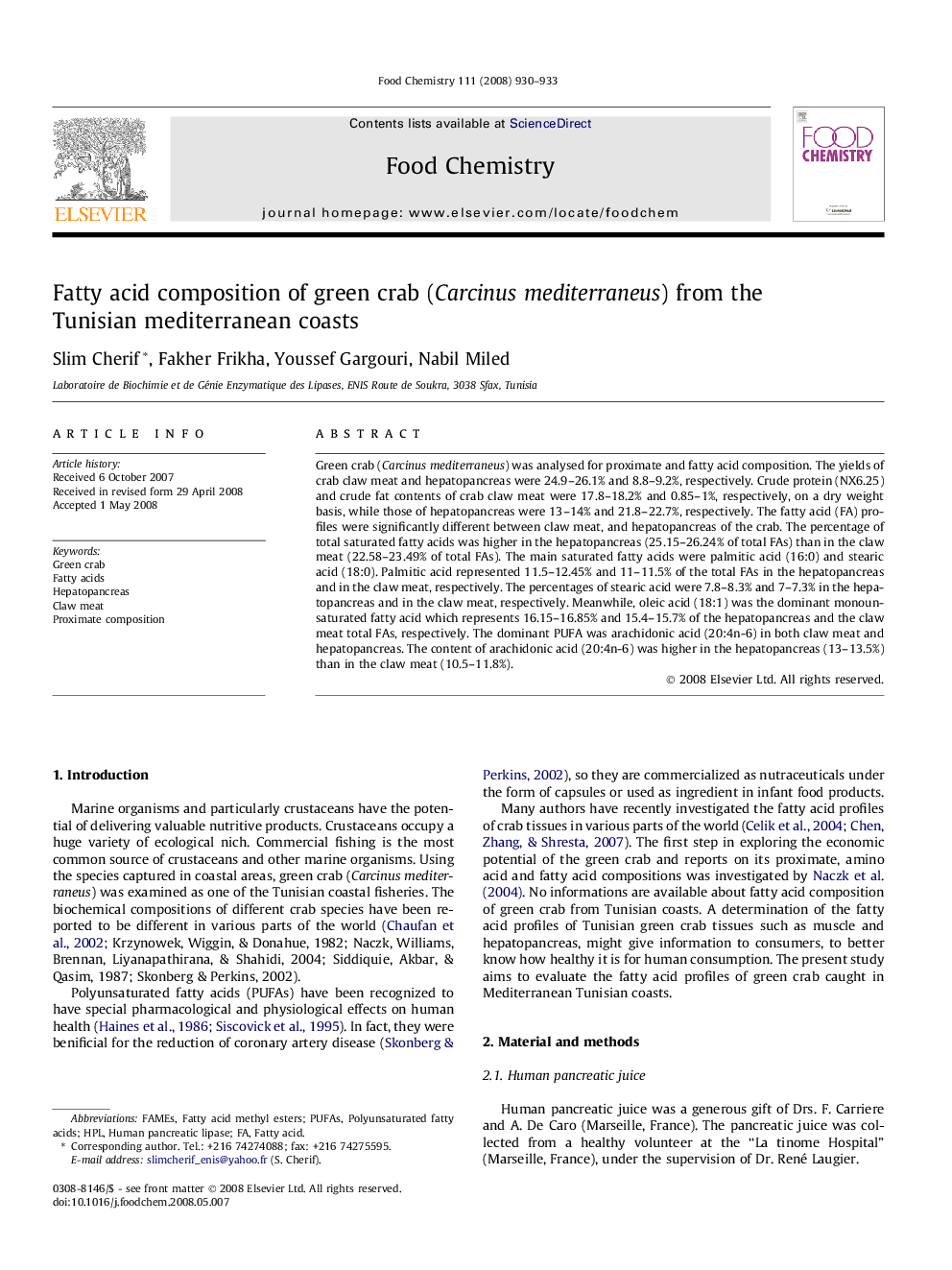| Article ID | Journal | Published Year | Pages | File Type |
|---|---|---|---|---|
| 1187736 | Food Chemistry | 2008 | 4 Pages |
Green crab (Carcinus mediterraneus) was analysed for proximate and fatty acid composition. The yields of crab claw meat and hepatopancreas were 24.9–26.1% and 8.8–9.2%, respectively. Crude protein (NX6.25) and crude fat contents of crab claw meat were 17.8–18.2% and 0.85–1%, respectively, on a dry weight basis, while those of hepatopancreas were 13–14% and 21.8–22.7%, respectively. The fatty acid (FA) profiles were significantly different between claw meat, and hepatopancreas of the crab. The percentage of total saturated fatty acids was higher in the hepatopancreas (25.15–26.24% of total FAs) than in the claw meat (22.58–23.49% of total FAs). The main saturated fatty acids were palmitic acid (16:0) and stearic acid (18:0). Palmitic acid represented 11.5–12.45% and 11–11.5% of the total FAs in the hepatopancreas and in the claw meat, respectively. The percentages of stearic acid were 7.8–8.3% and 7–7.3% in the hepatopancreas and in the claw meat, respectively. Meanwhile, oleic acid (18:1) was the dominant monounsaturated fatty acid which represents 16.15–16.85% and 15.4–15.7% of the hepatopancreas and the claw meat total FAs, respectively. The dominant PUFA was arachidonic acid (20:4n-6) in both claw meat and hepatopancreas. The content of arachidonic acid (20:4n-6) was higher in the hepatopancreas (13–13.5%) than in the claw meat (10.5–11.8%).
